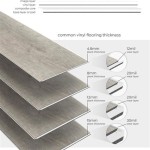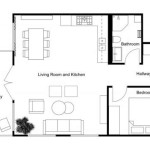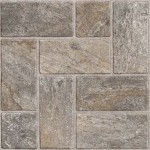Average Cost Of Laminate Flooring Per Square Foot: A Comprehensive Guide
Laminate flooring has become a popular choice for homeowners seeking an affordable and aesthetically versatile alternative to hardwood or tile. Its durability, ease of installation, and wide range of styles contribute to its appeal. Understanding the average cost per square foot of laminate flooring is crucial when budgeting for a flooring project. This article breaks down the factors influencing the price of laminate flooring, providing a comprehensive overview to help consumers make informed decisions.
The cost of laminate flooring is typically calculated on a per-square-foot basis. This unit of measurement enables accurate budgeting, irrespective of the total area needing coverage. The final project cost encompasses not only the material cost of the laminate itself, but also additional expenses like underlayment, installation labor, and potential disposal fees for existing flooring. Therefore, a thorough understanding of all contributing factors is essential for a realistic cost assessment.
The average cost of laminate flooring per square foot can vary significantly, generally ranging from $1 to $5 for the materials alone. However, this figure represents a broad spectrum, and the actual cost depends on several variables, including the quality of the laminate, its thickness, the style, and the brand. Furthermore, installation costs, which can range from $2 to $5 per square foot depending on the complexity of the job and the installer's rates, should be factored into the total expense. Thus, the total cost, including materials and installation, can range from $3 to $10 per square foot.
Key Factors Influencing Laminate Flooring Costs
Several key factors determine the price of laminate flooring per square foot. These factors relate to the quality and characteristics of the laminate itself, as well as the labor costs associated with its installation. Comprehending these factors allows for a more accurate assessment of the overall project expense.
Laminate Quality and Thickness: The quality and thickness of the laminate flooring are primary determinants of its cost. Laminate flooring consists of several layers, including a wear layer, a decorative layer, a core board, and a backing layer. The wear layer is the top surface that protects the flooring from scratches, stains, and fading. A thicker wear layer offers greater durability and resistance to wear and tear, making it suitable for high-traffic areas. Laminates with thicker wear layers typically cost more per square foot.
The core board, usually made of high-density fiberboard (HDF) or medium-density fiberboard (MDF), provides the structural stability of the laminate plank. Laminates with HDF core boards are generally more resistant to moisture and impact, resulting in a higher price point. The overall thickness of the laminate plank, typically ranging from 6mm to 12mm, also influences its cost. Thicker planks tend to be more stable, quieter underfoot, and better at mimicking the look and feel of hardwood, contributing to a higher price.
Style and Design: The style and design of the laminate flooring also affect its cost. Laminate flooring is available in a wide array of styles, mimicking various wood species, stone, and tile patterns. More intricate and realistic designs, particularly those with embossed textures or beveled edges, command a higher price. Laminate flooring that replicates rare or exotic wood species also tends to be more expensive due to the complexity of the manufacturing process and the perceived value of the design.
The finish of the laminate flooring also plays a role in its cost. Laminates with specialized finishes, such as hand-scraped, distressed, or wire-brushed textures, offer a more authentic and visually appealing look, but typically come at a higher price point. The choice of style and design should be carefully considered, balancing aesthetic preferences with budgetary constraints.
Installation Costs: Installation costs are a significant component of the total laminate flooring project expense. The cost of installation can vary based on several factors, including the complexity of the installation, the size of the area, and the geographic location. Professional installers typically charge between $2 and $5 per square foot for laminate flooring installation. This cost includes the preparation of the subfloor, the installation of underlayment, the cutting and fitting of the laminate planks, and the installation of baseboards and transitions.
Complex installations, such as those involving intricate patterns, multiple rooms, or uneven subfloors, may incur higher labor costs. The removal and disposal of existing flooring can also add to the overall installation expense. While DIY installation may appear to be a cost-effective alternative, it's important to consider the potential for errors and the need for specialized tools. Improper installation can lead to issues such as gaps, uneven surfaces, and premature wear, potentially negating any initial cost savings. Therefore, professional installation is often recommended to ensure a proper and long-lasting result.
Factors Affecting Material Cost
Delving deeper into the material cost of laminate flooring, numerous subtle yet significant factors can influence the price per square foot. These encompass the wear layer rating, the core composition, the locking mechanism, and the brand reputation of the manufacturer.
Wear Layer Rating (AC Rating): The Abrasion Class (AC) rating is a crucial indicator of laminate flooring's durability. This rating, ranging from AC1 to AC5, signifies the flooring's resistance to abrasion, impact, and staining. AC1-rated laminate is suitable for light residential use, such as bedrooms, while AC5-rated laminate is designed for heavy commercial use, like retail stores. Higher AC ratings correspond to greater durability and, consequently, a higher cost. Choosing the appropriate AC rating for the intended application is essential to balance cost and performance.
For residential spaces with moderate foot traffic, such as living rooms and hallways, an AC3 or AC4 rating is generally recommended. For high-traffic areas like kitchens and entryways, an AC4 or AC5 rating may be necessary. It's crucial to select a laminate with a wear layer rating that aligns with the expected level of use to ensure longevity and prevent premature wear and tear. Investing in a higher AC rating may result in a higher initial cost, but it can translate to long-term savings by reducing the need for frequent replacements.
Core Composition and Moisture Resistance: The core board of laminate flooring significantly impacts its moisture resistance and overall stability. Laminate flooring with an HDF core offers superior moisture resistance compared to MDF cores. Some manufacturers also offer water-resistant or waterproof laminate options, which are particularly suitable for bathrooms, kitchens, and basements. These water-resistant laminates typically feature a sealed core and tight locking mechanisms to prevent water from penetrating the seams.
The cost of water-resistant or waterproof laminate flooring is generally higher than that of standard laminate. However, the added protection against moisture damage can be a worthwhile investment, especially in areas prone to spills or high humidity. Selecting a laminate with appropriate moisture resistance is crucial for preventing warping, swelling, and other water-related issues. Careful consideration of the core composition and moisture resistance is essential for ensuring the long-term performance and durability of the laminate flooring.
Locking Mechanism: The locking mechanism of laminate flooring facilitates its installation and contributes to its overall stability. Laminate planks typically feature a tongue-and-groove system that allows them to interlock securely. The quality of the locking mechanism can vary significantly, with some systems offering a tighter and more secure fit than others. A robust locking mechanism minimizes gaps between planks, prevents water infiltration, and enhances the overall appearance of the floor.
Laminate flooring with advanced locking mechanisms, such as click-lock systems, is generally easier to install and provides a more seamless and durable connection. These advanced systems often come at a higher price point, but they can save time and effort during installation and contribute to the long-term performance of the floor. When selecting laminate flooring, it's essential to assess the quality of the locking mechanism to ensure a secure and long-lasting installation. A well-designed locking system can significantly enhance the overall value and performance of the laminate flooring.
Additional Cost Considerations
Beyond the direct costs of the laminate flooring and its installation, several additional factors can influence the total project expense. These include the cost of underlayment, baseboards, transitions, and the preparation of the subfloor.
Underlayment: Underlayment is a thin layer of material installed beneath the laminate flooring. It serves several purposes, including providing cushioning, reducing noise transmission, and improving moisture resistance. Some laminate flooring products come with pre-attached underlayment, while others require a separate underlayment to be installed. The cost of underlayment can range from $0.30 to $1.00 per square foot, depending on its thickness, material, and features.
The type of underlayment required depends on the specific laminate flooring product and the condition of the subfloor. For example, if the subfloor is uneven, a thicker underlayment may be necessary to provide a level surface. A moisture-resistant underlayment is recommended for areas prone to high humidity or moisture. While it may be tempting to skip underlayment to save on costs, it's an essential component for ensuring the proper performance and longevity of the laminate flooring. Investing in a quality underlayment can significantly improve the comfort, sound insulation, and moisture resistance of the floor.
Baseboards and Transitions: Baseboards and transitions are finishing elements that add a polished look to the laminate flooring installation. Baseboards are installed along the walls to cover the gap between the flooring and the wall, while transitions are used to connect the laminate flooring to other types of flooring or to accommodate changes in floor height. The cost of baseboards and transitions can vary depending on the material, style, and complexity of the installation.
Baseboards are typically made of wood, MDF, or PVC. Wood baseboards offer a classic and elegant look, but they require painting or staining. MDF baseboards are less expensive than wood and can be easily painted. PVC baseboards are waterproof and resistant to termite damage, making them suitable for bathrooms and kitchens. Transitions are available in various materials, including wood, metal, and vinyl. The choice of baseboards and transitions should complement the style of the laminate flooring and the overall design of the space. While baseboards and transitions may seem like minor details, they significantly contribute to the finished look and functionality of the floor.
Subfloor Preparation: Proper subfloor preparation is crucial for a successful laminate flooring installation. The subfloor must be clean, dry, level, and structurally sound. Any imperfections in the subfloor, such as cracks, holes, or unevenness, must be addressed before installing the laminate flooring. Subfloor preparation can involve filling cracks, leveling the surface, and ensuring proper moisture levels. The cost of subfloor preparation can vary depending on the extent of the work required.
In some cases, extensive subfloor repairs may be necessary, which can significantly increase the overall project cost. It's essential to assess the condition of the subfloor before purchasing laminate flooring to determine the extent of preparation required. Neglecting subfloor preparation can lead to issues such as uneven surfaces, squeaking, and premature wear of the laminate flooring. While subfloor preparation may add to the initial cost, it's a crucial step for ensuring a long-lasting and trouble-free installation.

The Complete Guide To Flooring Costs By Type Twenty Oak

Fixr Com 2024 Laminate Flooring Installation Cost

The Complete Guide To Flooring Costs By Type Twenty Oak

Fixr Com 2024 Laminate Flooring Installation Cost

Fixr Com 2024 Laminate Flooring Installation Cost

Fixr Com 2024 Laminate Flooring Installation Cost

2024 Laminate Flooring Installation Cost Guide Angi

How Much Does Flooring Installation Cost 2024 Guide

Hardwood Flooring Cost 2024 Per Square Foot Mk

How Much Does Flooring Installation Cost 2024 Guide








